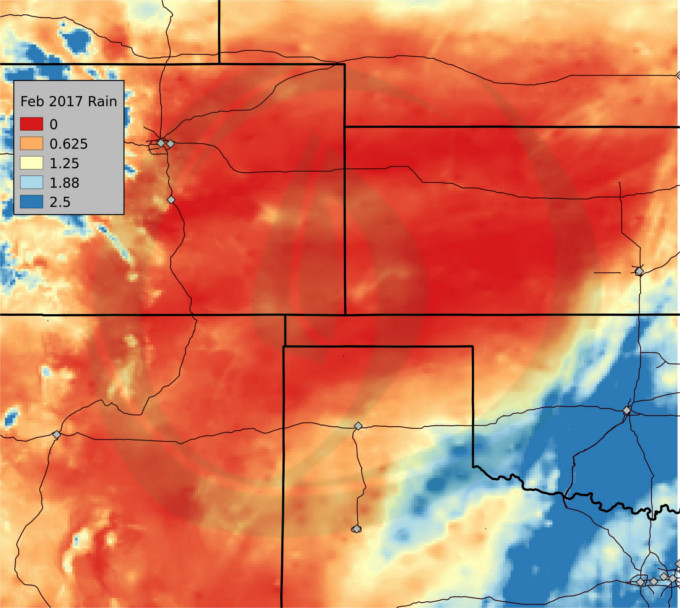As we are wrapping up February, it has been a fairly wet start to the year in the Southern Plains with a large precipitation event--rain, ice, or snow depending on your location--in January and then a smaller event in February. After driving around and seeing much of the area since the first of the year, the best wheat is south of Interstate 40 with grazing in full swing in most places. With the warmer temperatures the wheat is breaking dormancy and beginning to grow with the moisture. See figure 1 for a map of precipitation so far in February.

To see the January rainfall and future outlook view our previous post.
I have heard from multiple farmers in this area that cattle gains have been phenomenal on wheat with some cattle needing to be shipped a month early for contract specs coming off of the wheat. It looks like there will not be enough cattle to graze the wheat out, and this situation should lead to some wheat being hayed or even harvested. Harvest seems to be the last resort given the low price.
North of Interstate 40 and west of Greensburg, Kansas, you can characterize the wheat in one word: spotty. This large area just had a short time to get a good wheat stand in the fall. The wheat planted in the “sweet spot” looks pretty good and has reasonable yield potential. However, more acres were planted out of the “sweet spot” and has thin stands or none at all. It looks like the brutal cold temperatures in December may have hurt some wheat that was trying to come up after November moisture. Time will tell how it looks by March 15 or April 1 when it can be turned in for a crop insurance loss.
As for the spring, the National Weather Service Climate Prediction Center released their long-term forecast last week and it looks to be favoring a dry and warm March, April and May for the Southern Plains. You can see the full forecast here.
Thomson Reuters also tweeted about the El Niño, La Niña and the Southern Oscillation analogs pointing to dry conditions in the Southern Plains.
The best March-May ENSO analogs indicate the potential for significant dryness over the southern U.S. crop regions. #TRweather pic.twitter.com/fJVxq5tY5L
— Agriculture (@TRAgriculture) February 16, 2017
And that brings us back to where we are today and a conversation I had with a farmer in New Mexico that is at 50% above his long-term average rainfall since the beginning of the year: “This wheat can look good now, but if it turns off hot and dry in March and April, it’ll turn belly up.” I guess we will just have to wait and see.

